Bagan is a popular place, busy with tourists. Forget about being the object of local fascination as is standard practice in less touristed corners of Myanmar. While you may not feel like a V.I.P. in Bagan, you can still get away from the crowds and do your own thing, gawking millenia old temples in the process. And you can do so in a rather exciting manner… by zooming around Bagan on an e-bike.
My Bagan E-bike Adventure
I revved the throttle with my right hand, flicked the turn signal with my left and steered my e-bike across the road toward the row of bikes stationed outside the guesthouse. I hopped off as the bike came to a stop and pushed the heavy machine into its spot at the end of the line.
All of a sudden the bike, seemingly on its own, jerked forward and crashed into its neighbor. It tumbled onto my right leg and pinched my arm beneath the handlebar as I fell into the gravel.
The guesthouse manager rushed out, perhaps equally alarmed at the prospect of a damaged investment and an injured tourist. Her fears — and mine — were allayed; both man and machine were fine. The bike was stood up and parked with no visible damage; same for the tourist, fine, but for a few bruises and a couple scrapes.
It was time for breakfast.
Bulethi Temple
A few hours prior to my little crash, I pulled into the Bulethi temple grounds after a white knuckle, pitch-dark jaunt through the scrubby desert. I parked the bike, kicked off my sandals — as with all Buddhist sights, footwear and socks of any kind are strictly forbidden — and began the ascent.
Bulethi was rather steep, the footing precarious, the looming sunrise still an hour away. The number one must have for properly exploring Bagan — a flashlight. One misstep could easily mean your life.
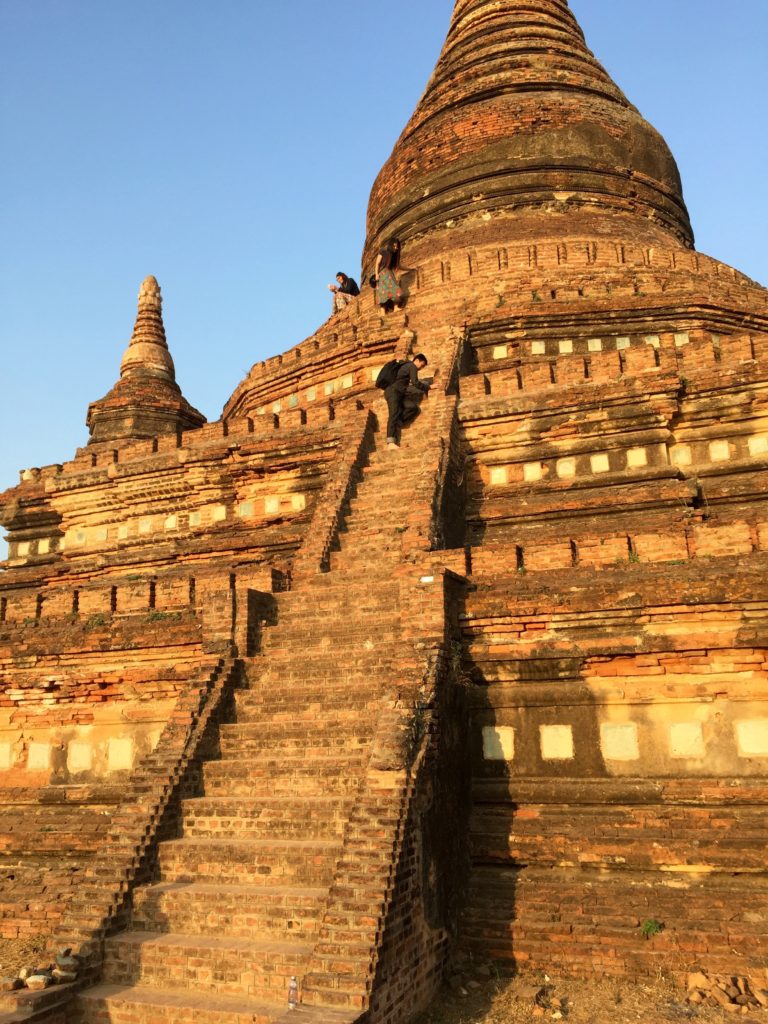
I was somewhat late — if 5:40am can ever be called “late” — and missed the prime sunrise seating, but there were few bad seats on the narrow ledges of the highest circular level. In the distance twenty hot air balloons inflated and took off, punctuating the beautiful early morning scene.
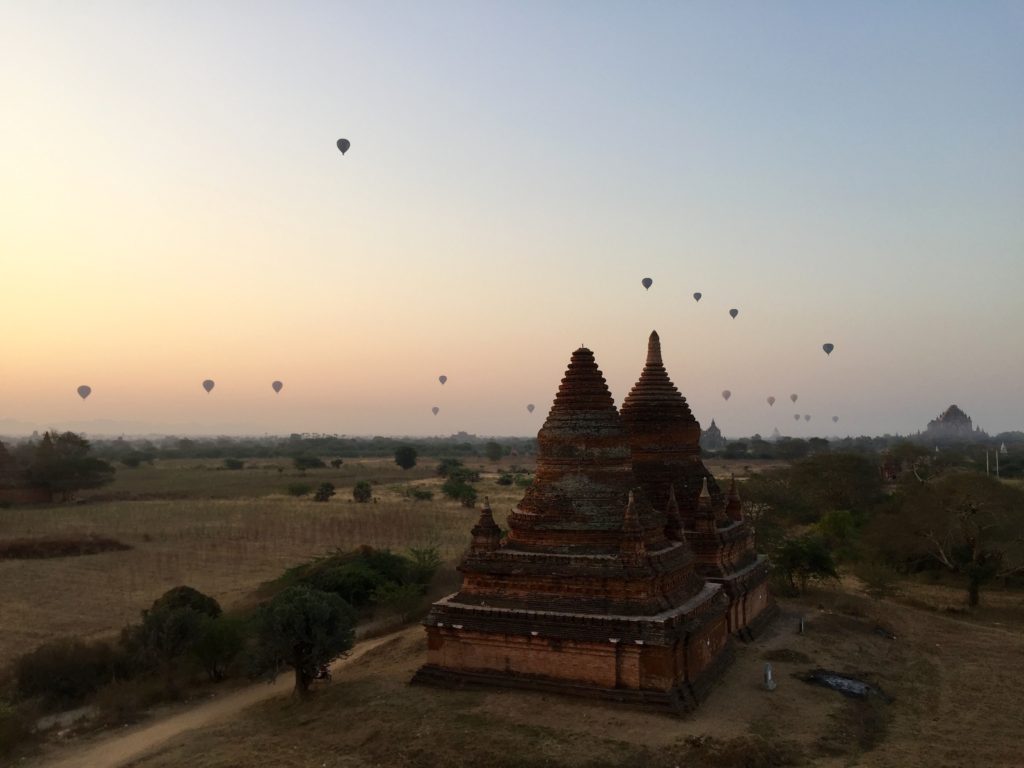
Interested in floating over the temples in one of those balloons?? I explain your options and detail my experience here.
Down below a horse cart owner stirred, hopeful for a nibble from the early risers looking to beat the heat. Bulethi’s twin temple across the way morphed from brown to mustard to radiant gold as the sun rose higher in the hazy spring sky.
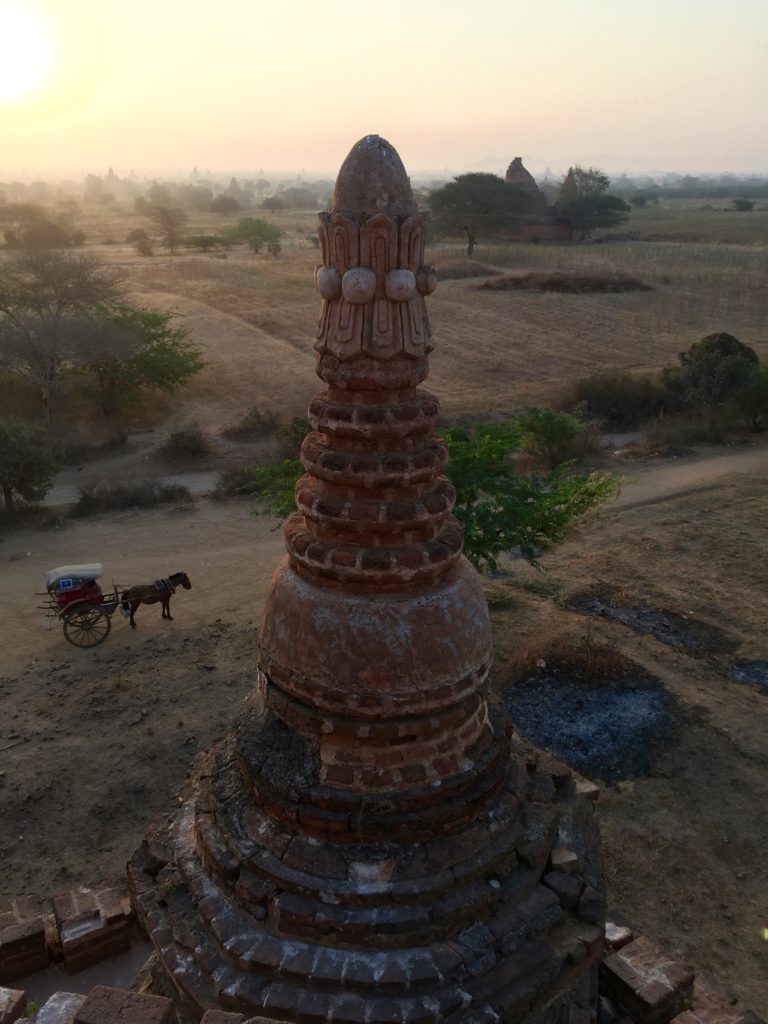
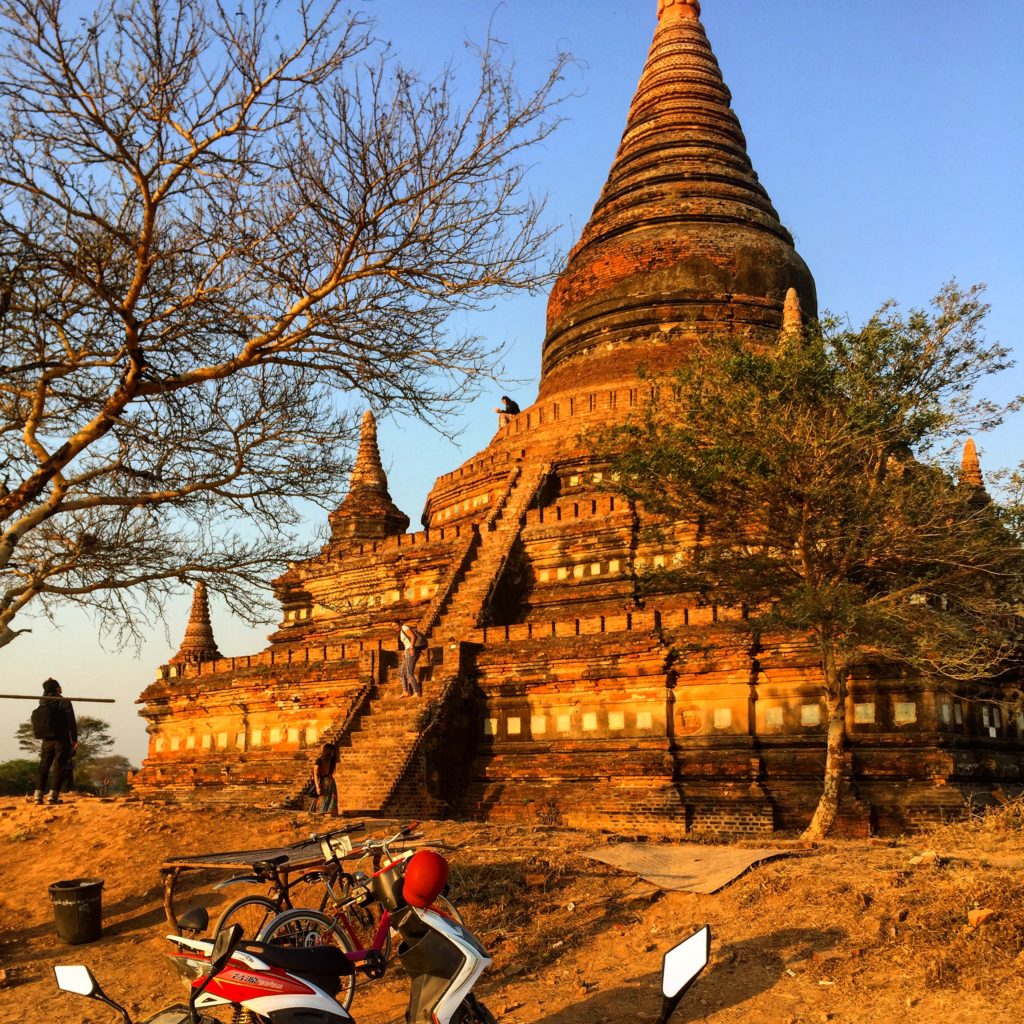
WHAT IS BAGAN?
Bagan is the former capital of the ancient Pagan Empire. The city itself was founded in the 9th century on the banks of the Ayeyarwady (Irrawaddy) River in Upper Burma.
Between 1044 and 1287 the area flourished as Pagan expanded and its wealthy leaders constructed an array of temples, stupas and monasteries. All in all, perhaps 13,000 monuments were built. Bagan developed into a center for learning, thought, research and religion. It attracted monks, scholars and students from across southern Asia.
Pagan — and consequently, Bagan — thrived.
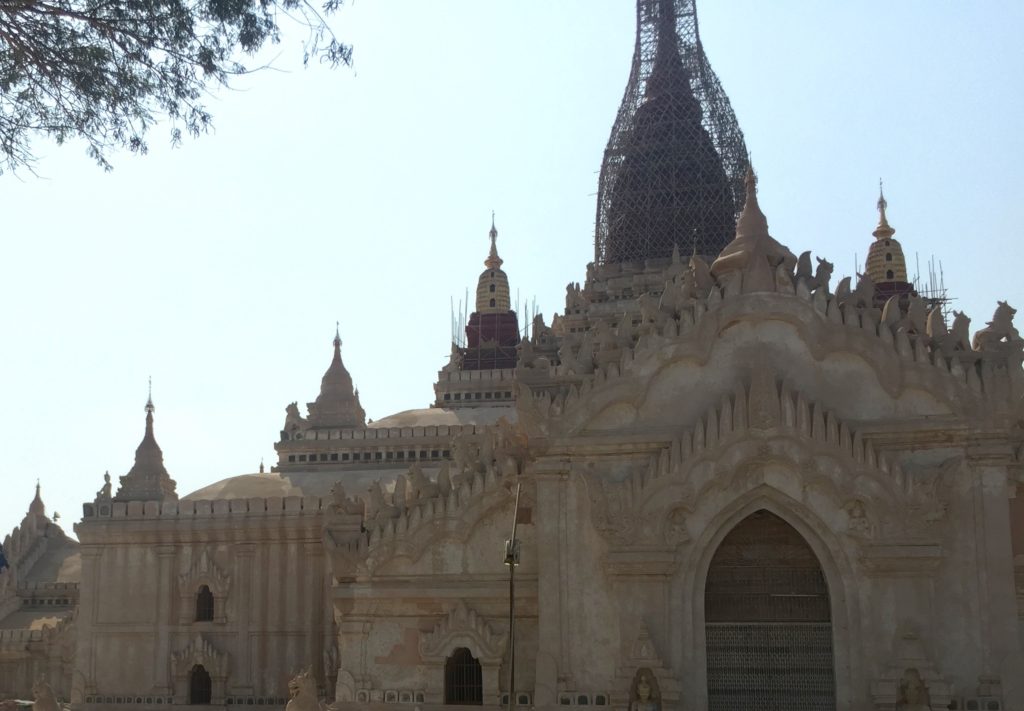
Then the Mongols arrived.
After a series of sustained sackings and invasions in the late 13th century, Pagan collapsed in 1287. A new kingdom grew out of the rubble, but Bagan’s time as a capital city and center of empire was through.
Bagan didn’t exactly turn into a ghost town. People still lived in the area and continued to construct religious structures even after the collapse. But the long, slow decline had begun.
Mr. Bike’s Jungle Trek — sounds cool, eh? It is! Read about it here.
BAGAN TODAY
By the turn of the 20th century Bagan was just sort of there. Erosion and centuries of earthquakes took their toll. A series of misguided restorations certainly didn’t help. Many of the temples were falling down and those that stood were re-built in incongruous fashion using modern techniques. A major earthquake in 1975 took down a number of temples and brought Bagan to its knees.
Luckily Burma’s military government decided to step in and rebuild the temples!
Actually, no, that wasn’t such a good thing. It was a complete debacle.
The restorations were so bad UNESCO refused to grant Bagan World Heritage protected status.
Luckily — I’m serious this time! — the newest restoration work has been of significantly higher quality, carried out properly amid expert oversight. Bagan, despite a devastating 2016 earthquake, is currently on track for eventual World Heritage status.
SHWESANDAW TEMPLE
Some Bagan temples are extremely busy, many others virtually empty. If given the choice of exploring a less impressive sight alone or “the best temple” along with hundreds of others, in my world that’s an undeniably easy decision.
Point in case — North and South Guni vs Shwesandaw. The latter receives ALL THE PRESS. Lonely Planet sings its praises. Travel bloggers seem to love it. The ubiquitous Bagan map lists it as a prime sunset location and my guesthouse owner echoed that sentiment. Red flags!
Shwesandaw is easily accessible to cars, buses and anyone else interested in a visit. I rode over one afternoon around 3pm and found the place entirely empty.
Hmm, this wasn’t what my book said.
I had the sugar cane juice vendor to myself. Kids and dogs were keen on having a kick about with a soccer ball. What a pleasant surprise!
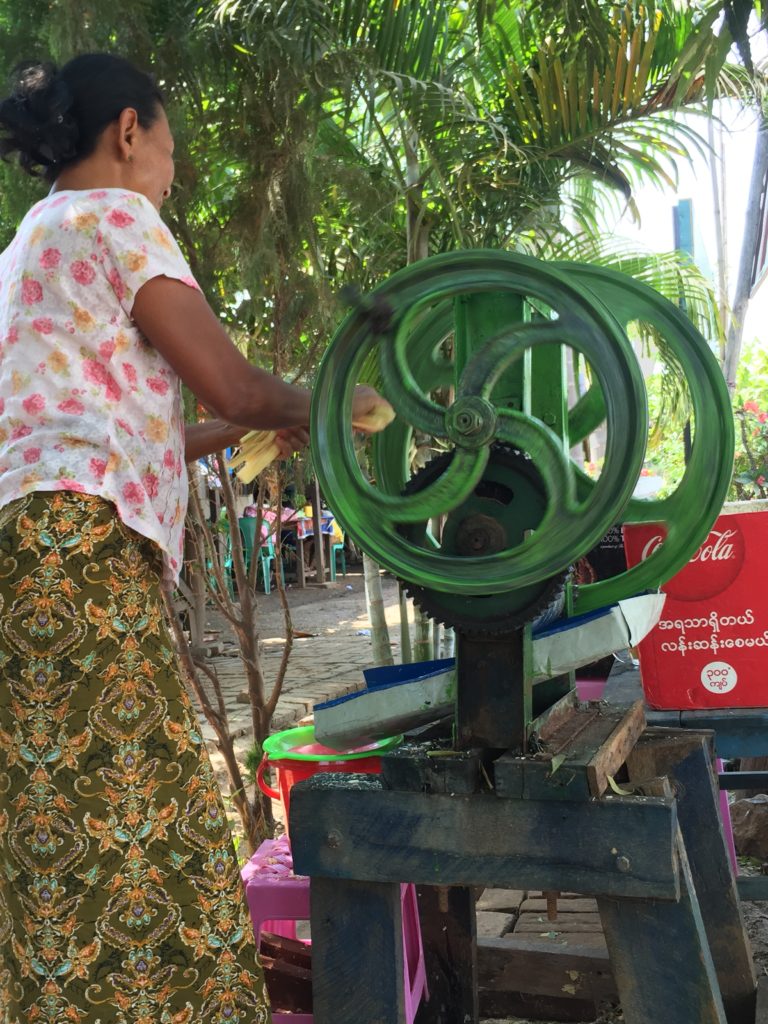
I climbed to the highest levels of Shwesandaw and enjoyed the solitude. For a while.
But then the noise increased. Taxis kicked up dust clouds as they made their way in from the main road. Buses idled in the parking area. Tour groups began flooding the platforms. Camera shutters clicked away. People laughed and chatted and elbowed their way into the best sunset viewing nooks.
I became markedly less enthused as my new companions streamed in.
Check it out — here’s a video clip.
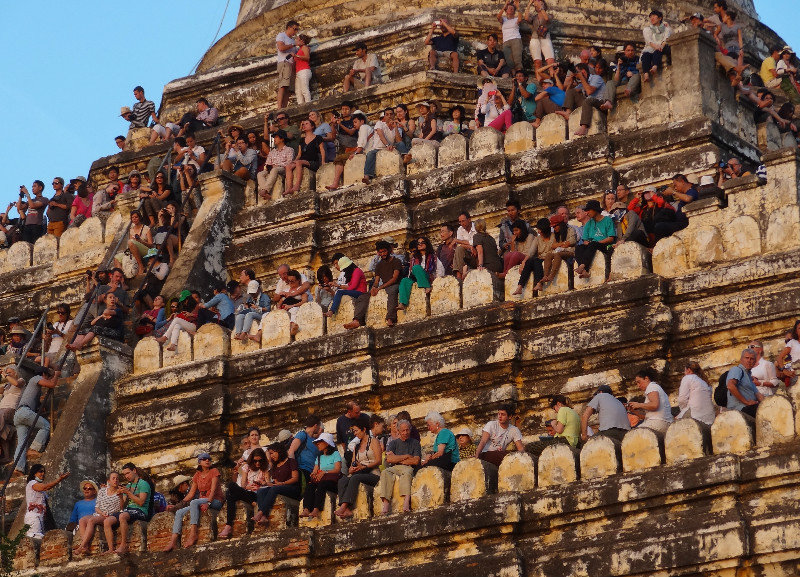
I found the entire scene quite amusing, but even my admittedly peculiar sense of humor has its limits. The side opposite the impending sunset had been blissfully quiet all afternoon, so I retreated there.
Every so often a peek around the corner confirmed my fears — Shwesandaw was a zoo.
I snapped a photo of the masses crowding the steps, hopeful for that “perfect” sunset experience… alongside several hundred others.
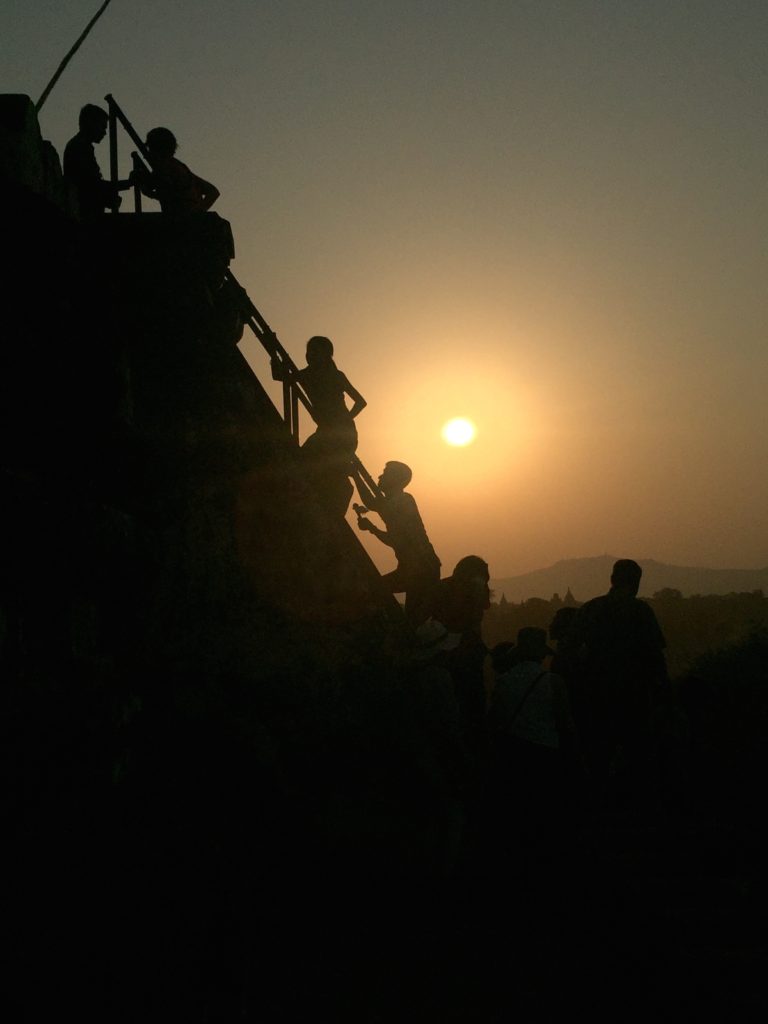
GUNI
For the complete opposite experience, head down a narrow sandy track just five minutes away and discover the rather quiet North Guni (Myauk Guni) and South Guni (Taung Guni). These twin temples are only accessible to bicycles, e-bikes and cars with adventurous (crazy?) drivers. Perfect!
SOUTH GUNI
I strolled through the open gate in South Guni’s perimeter brick wall and gave my best “Mingalabar!” to a group of workers taking a break in the shade. A few flights of stone stairs led me to the roof and a spectacular view across the Bagan plain. Bamboo scaffolding wrapped South Guni while its unencumbered sister temple pierced the blue sky like an ancient Burmese mini skyscraper.
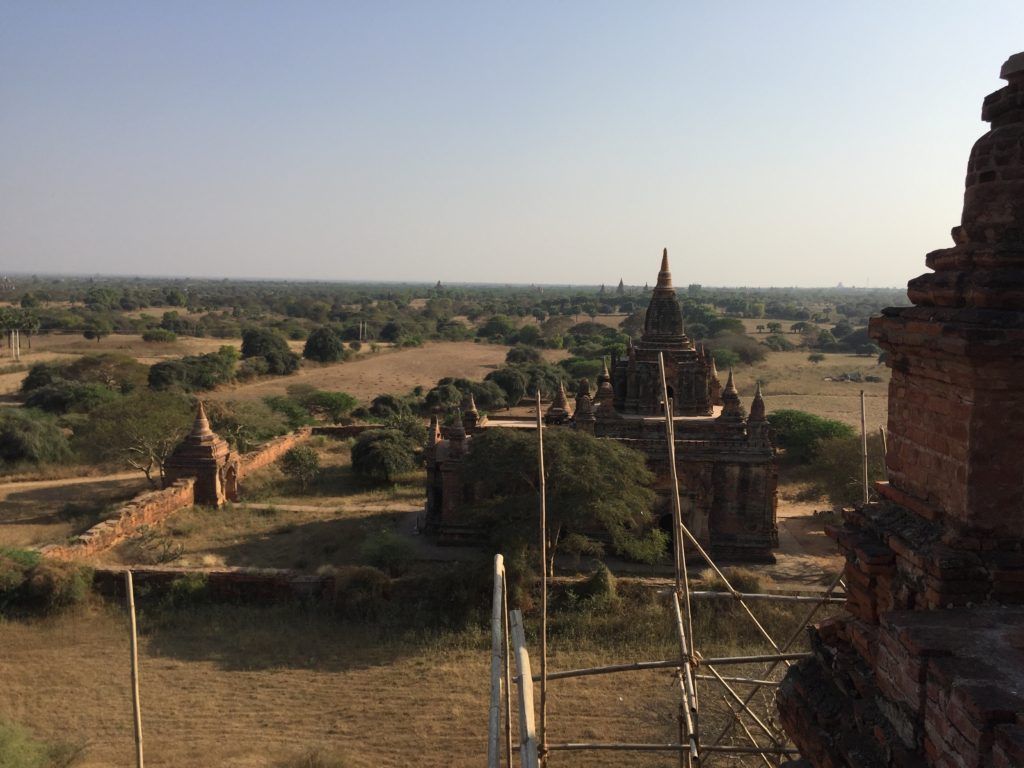
The sense of exploration and discovery is what drives my off the beaten path sensibilities and this was right in my wheelhouse. I was, quite literally, the only one here. I leaned back against the brick structure, propped up my bare feet and eventually dozed off in the midday shade.
An hour later I confronted potential disaster — the front gate was locked. Visions of shouting to the occasional passersby danced through my head until realizing, upon closer inspection, I could climb the chest high gate without a) impaling myself or b) damaging anything. Crisis averted.
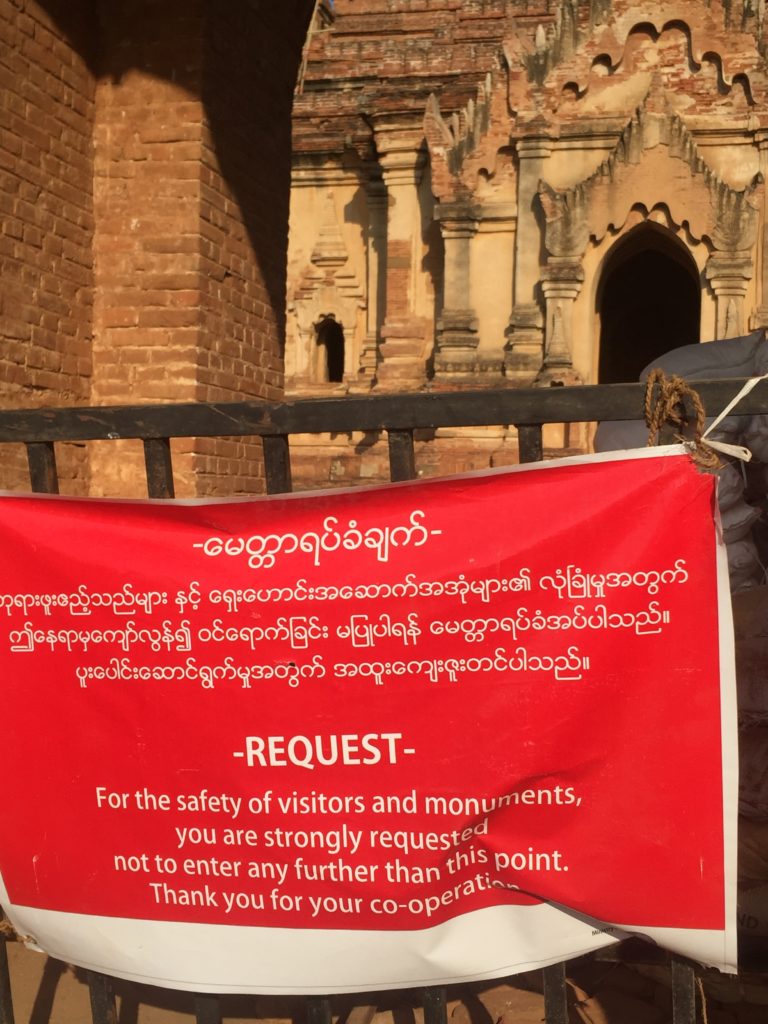
NORTH GUNI
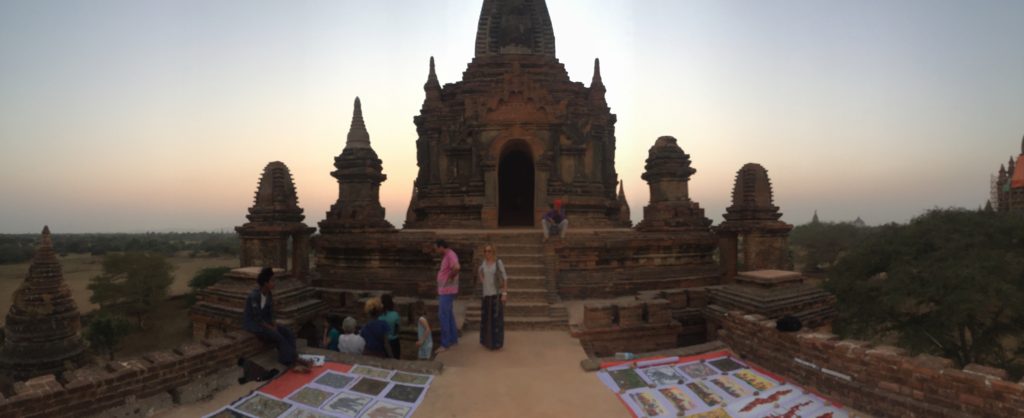
I wandered over to the officially open North Guni, squeezed through some rather tight passageways and discovered a wedding photo shoot in action. Much credit goes to one amazing bride for making it up seven flights of crumbling steps without dirtying or destroying her dress. Impressive work! I enjoyed a lovely sunset with about ten other travelers, all of whom who seemed to relish their distance from the tour bus masses.
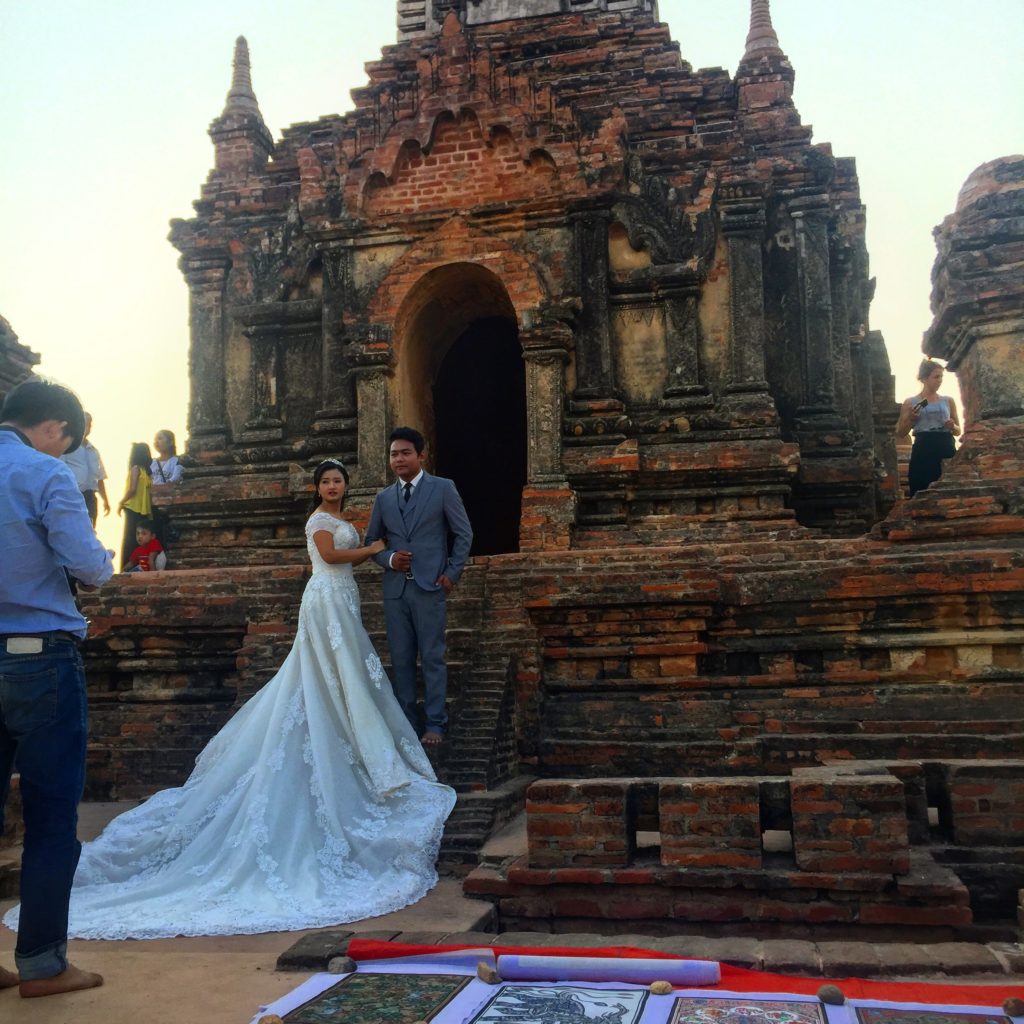
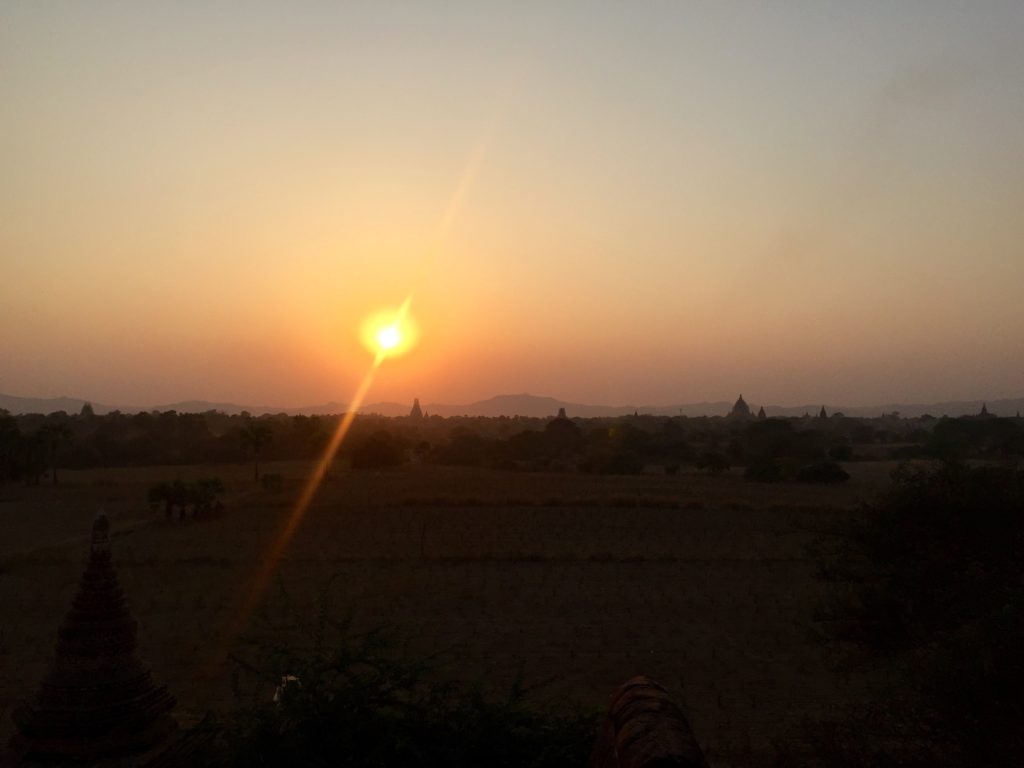

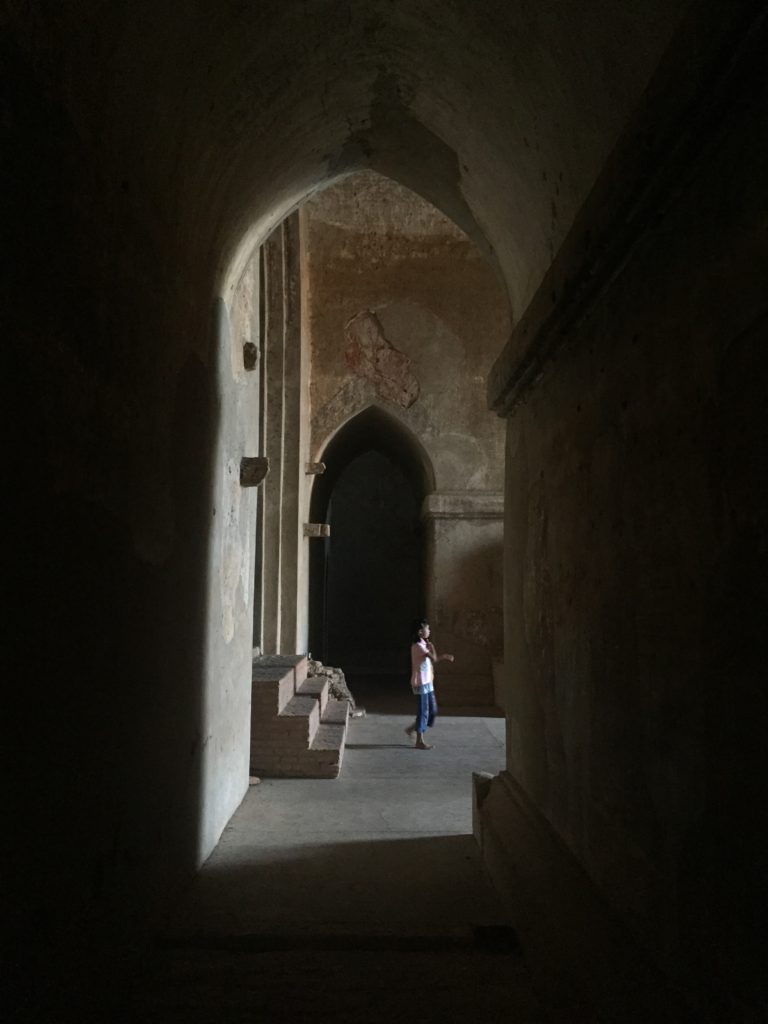
A handful of young lads put out candles to illuminate the steps coming down from the roof terrace. Most visitors ignored the kids and seemed more interested in getting back to town before dark (a valid concern), but I appreciate entrepreneurship. I had to give it to them — the candles did the trick. I gave them 200 kyat (US$0.15), snapped photos and shook a few hands.
My day couldn’t get much better.

E-BIKE AROUND BAGAN
E-biking around Bagan was my first experience operating anything with two wheels more powerful than a bicycle and it had gone spectacularly well.
I had a helmet — not always on offer. I had a strong bike — a newer Chinese Taiyuan model, great for powering through the sandy paths necessary to reach the most secluded temples of Bagan. And I had the proper attire — linen pants, a lightweight t-shirt, long sleeve linen shirt, sandals, sunglasses and a small scarf tied around my face.
Sound like overkill? The only ones dumb enough to wander out in shorts and t-shirts were tourists.
An average day on the plains of Bagan in March registers 95F (35C), exceedingly sunny, bone dry (it hadn’t rained in five months) and exceptionally dusty. A vehicle of any sort in close proximity meant a giant dust cloud in its wake. And on the sandy pathways off the actual roads it could mean blinding by kicked-up particulate. I appeared set for a bank heist.
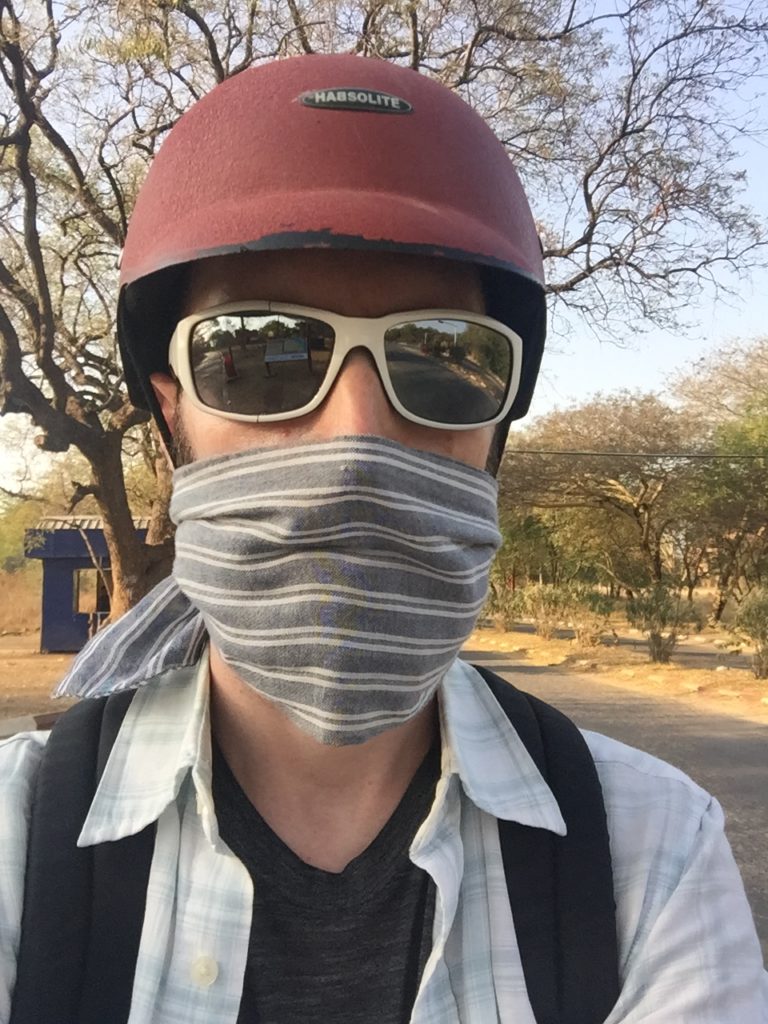
I spent four days e-biking around Bagan. Several mornings I was on the road in the darkness at 5am, heading for a quiet sunrise location. Navigating down a narrow sandy track in the dark while trying to stay on the most compacted part of the path took skill. And I was definitely lacking. I got used to the bike’s strong suits (acceleration) and its weak ones (traction in the sand). Except for the incident at the guesthouse, I managed to keep my e-bike upright the entire time.
I followed my sunrise trips with homemade Shan noodle breakfasts on the guesthouse roof. After some down time during the hottest part of the day I would head out again for a late afternoon of templing. Glasses of freshly squeezed sugar cane juice — 500-1000 kyat (US$0.33-$0.67), location dependent — from vendors set up outside the larger temples kept me hydrated.
THE BEST OF THE BAGAN TEMPLES
Depending upon who you ask, present day Bagan includes between 2,000 and 4,000 structures and regardless of the difference in accounting, there is a lot to see! Some people carve out just one full day for Bagan. ‘Pure lunacy’ is an apt description for that plan. Take your time, relax, don’t get “templed out”. It deserves at least three days of your time.
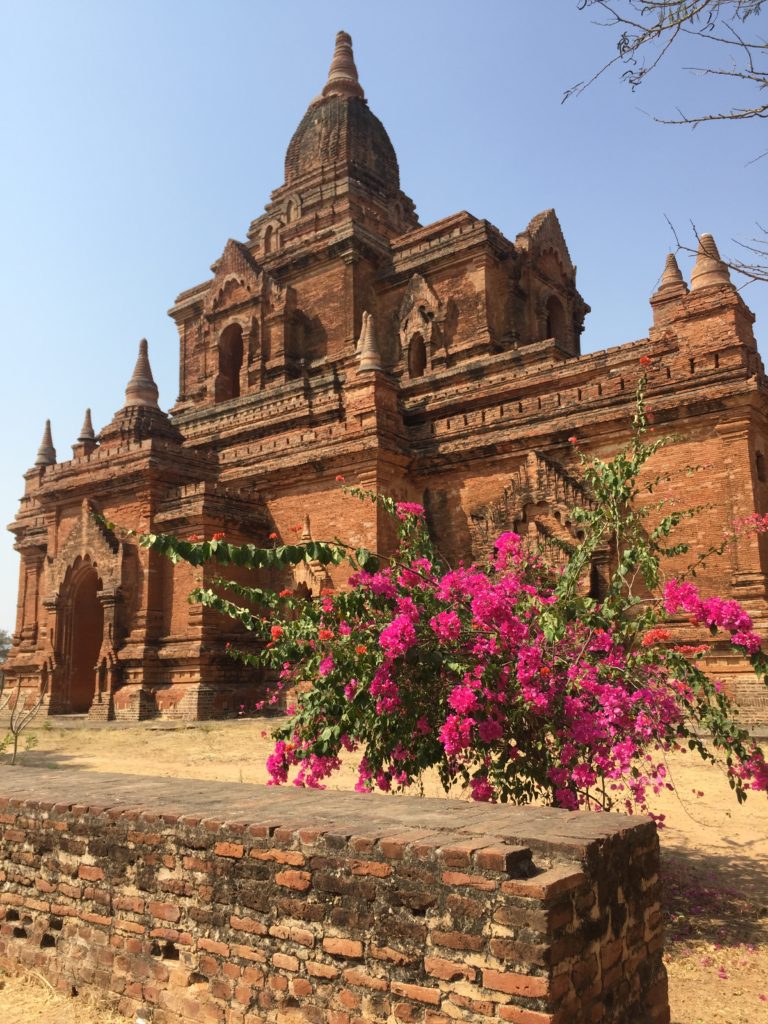
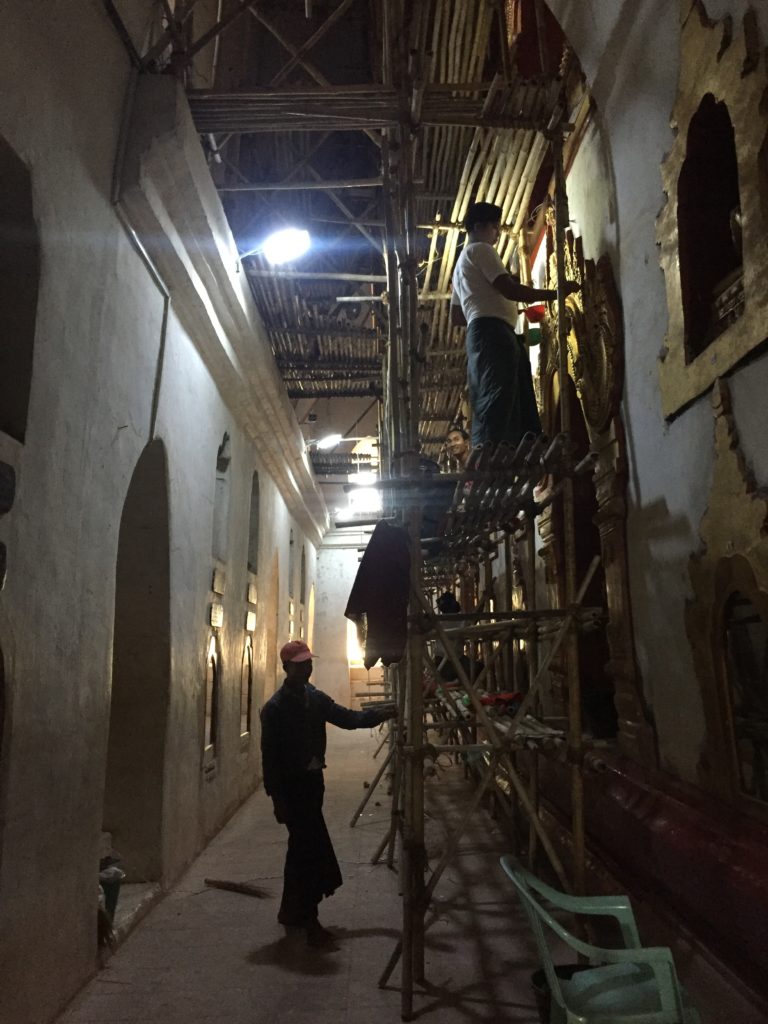
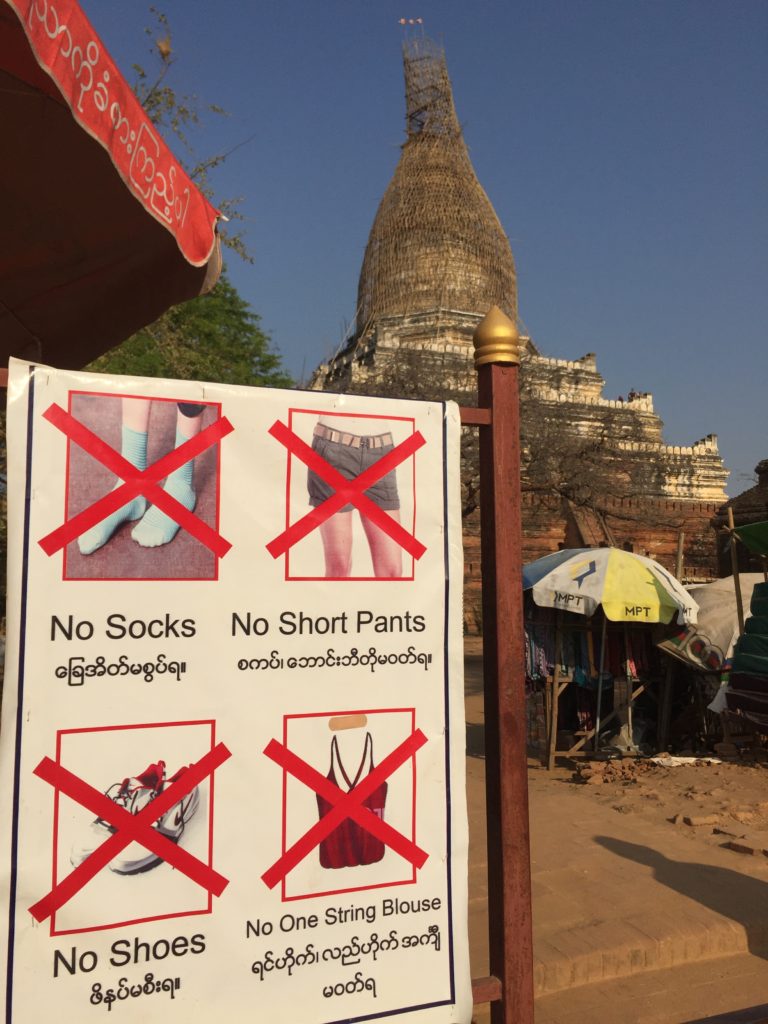
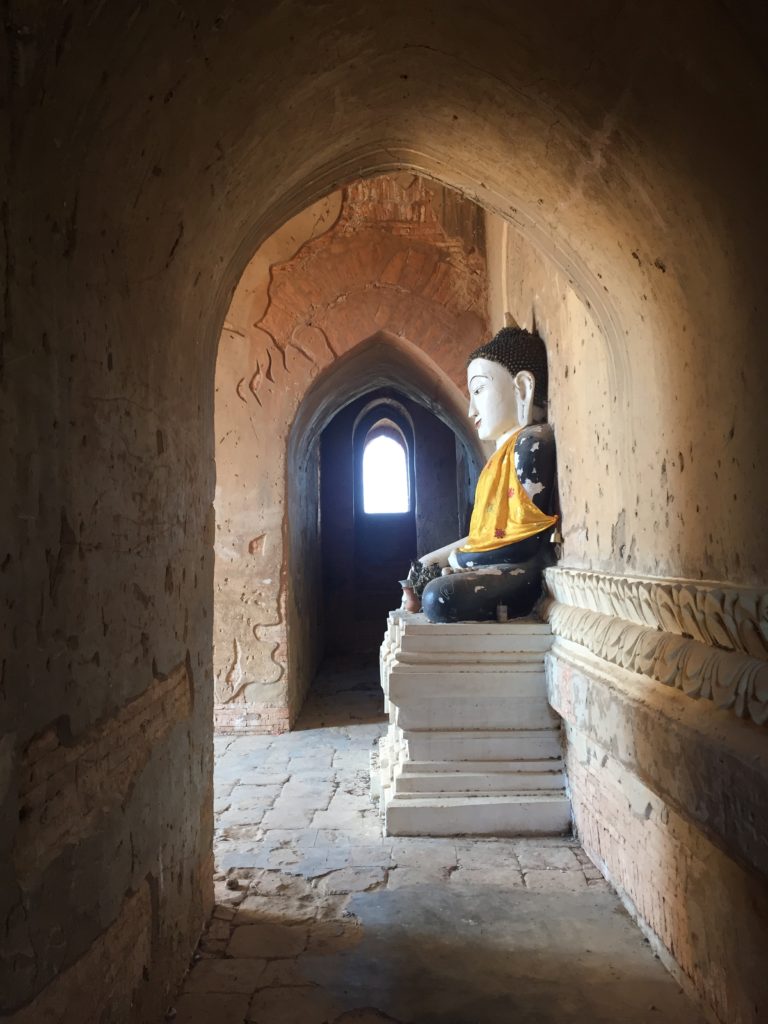
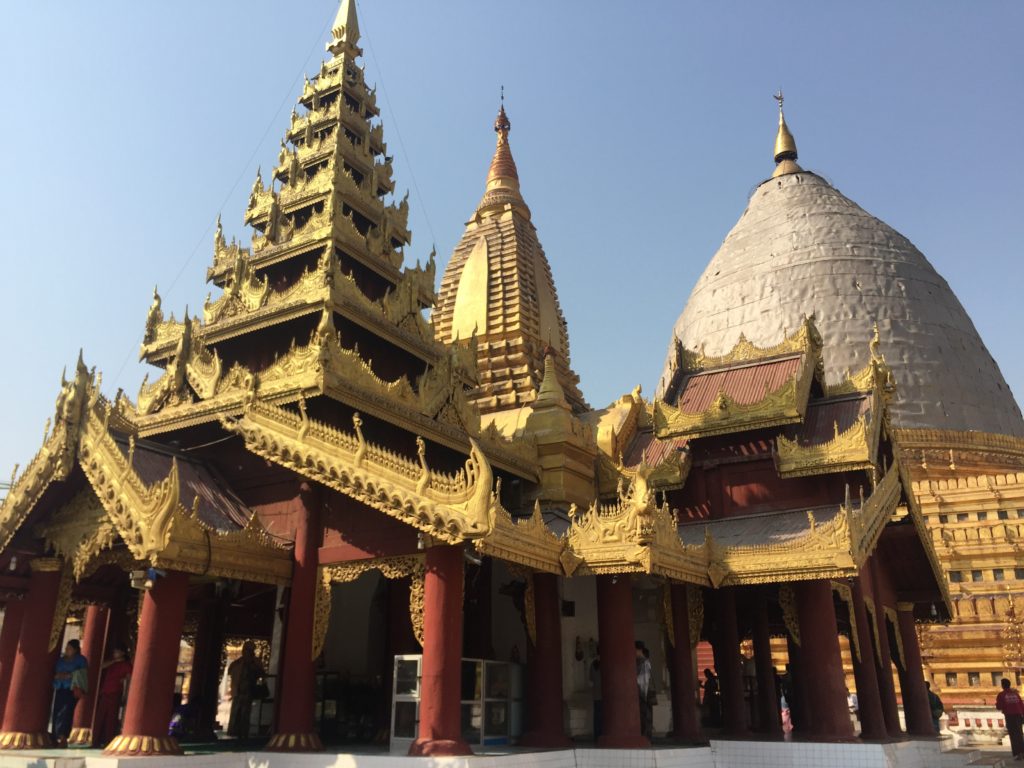
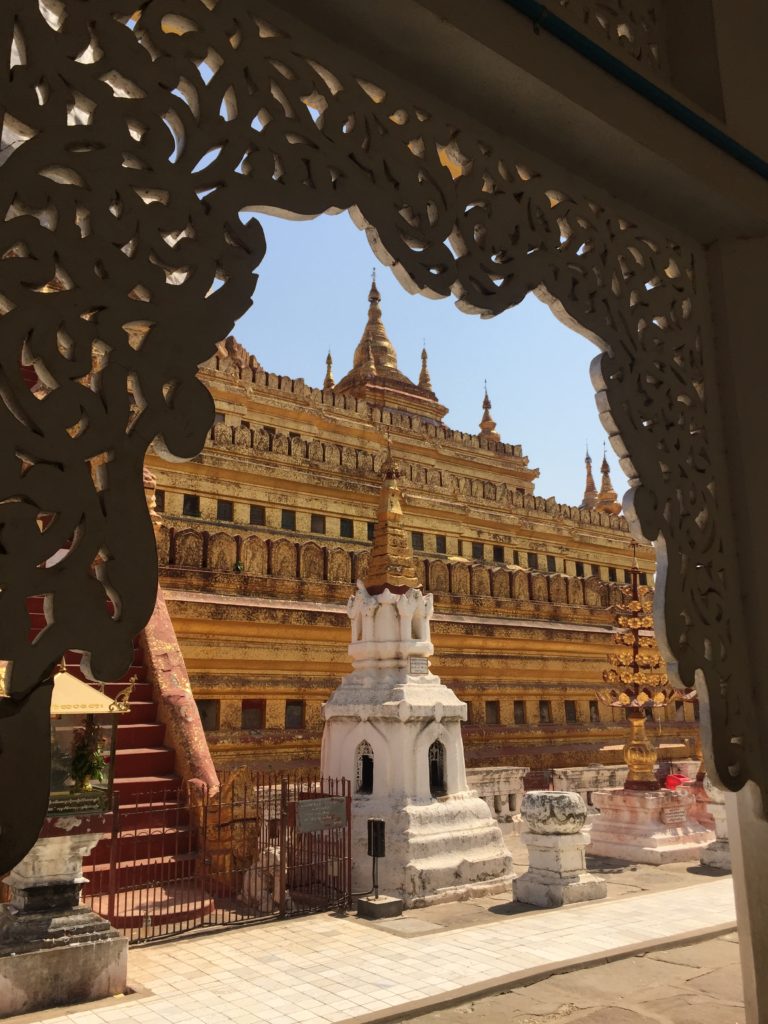
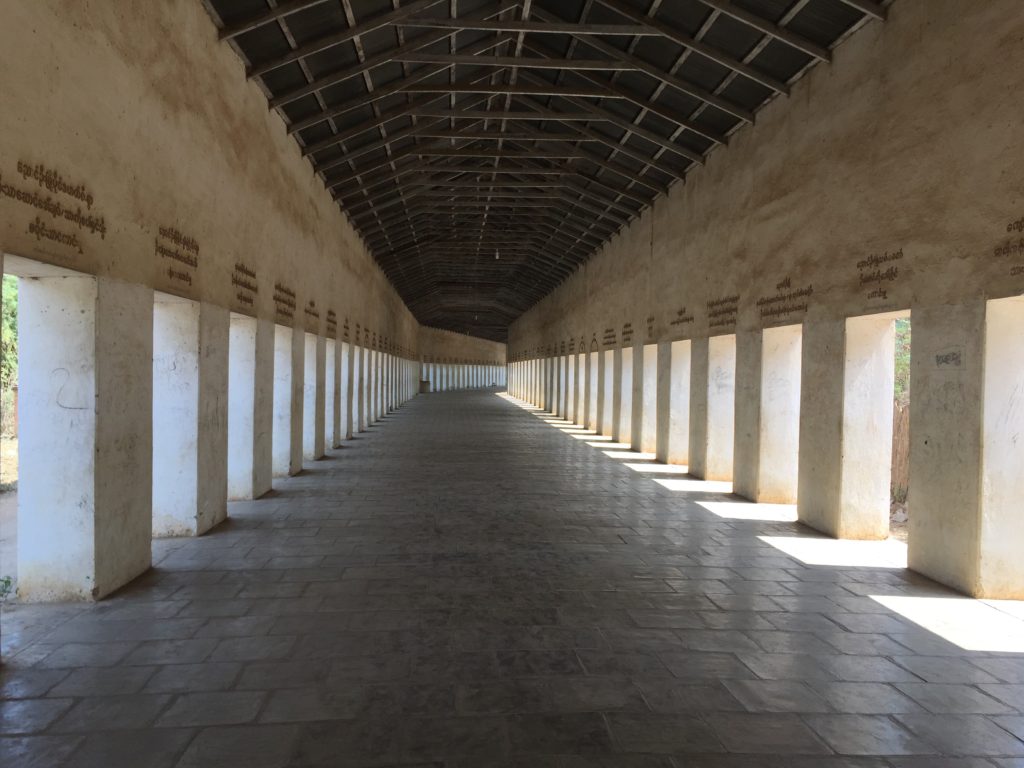
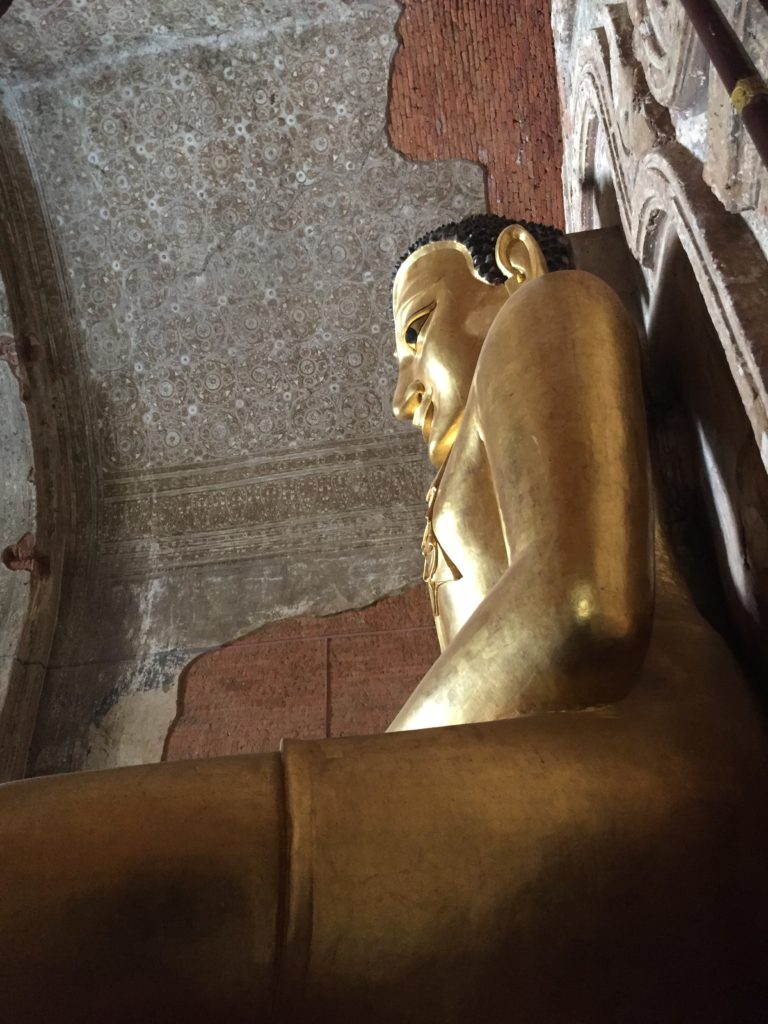
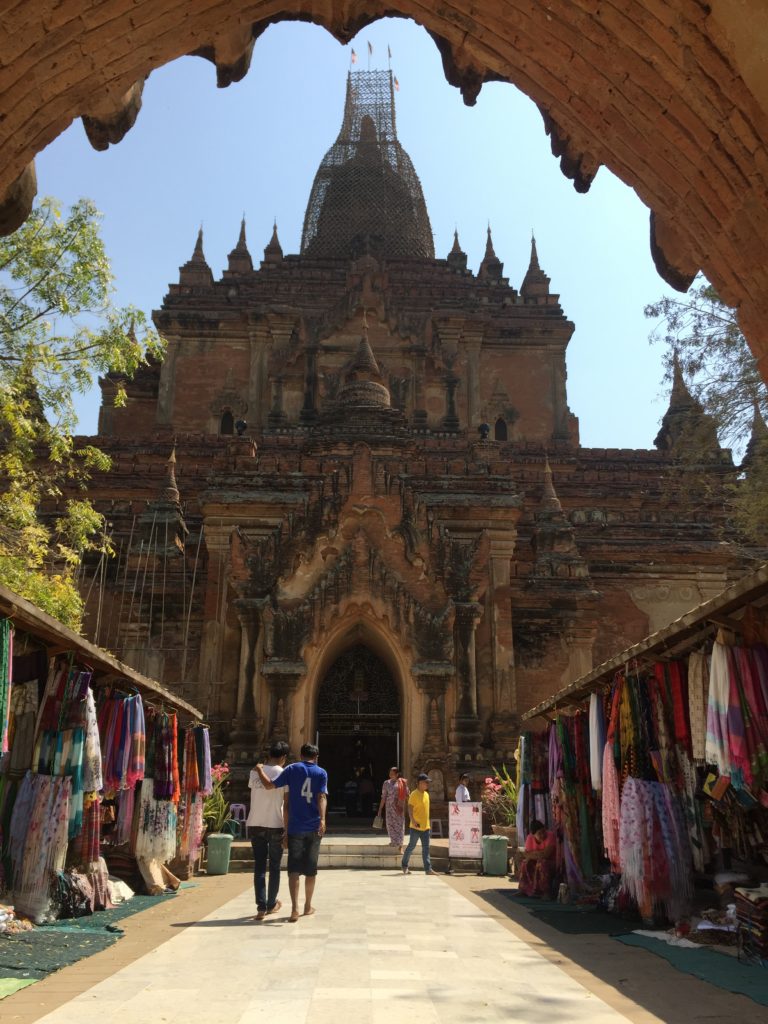
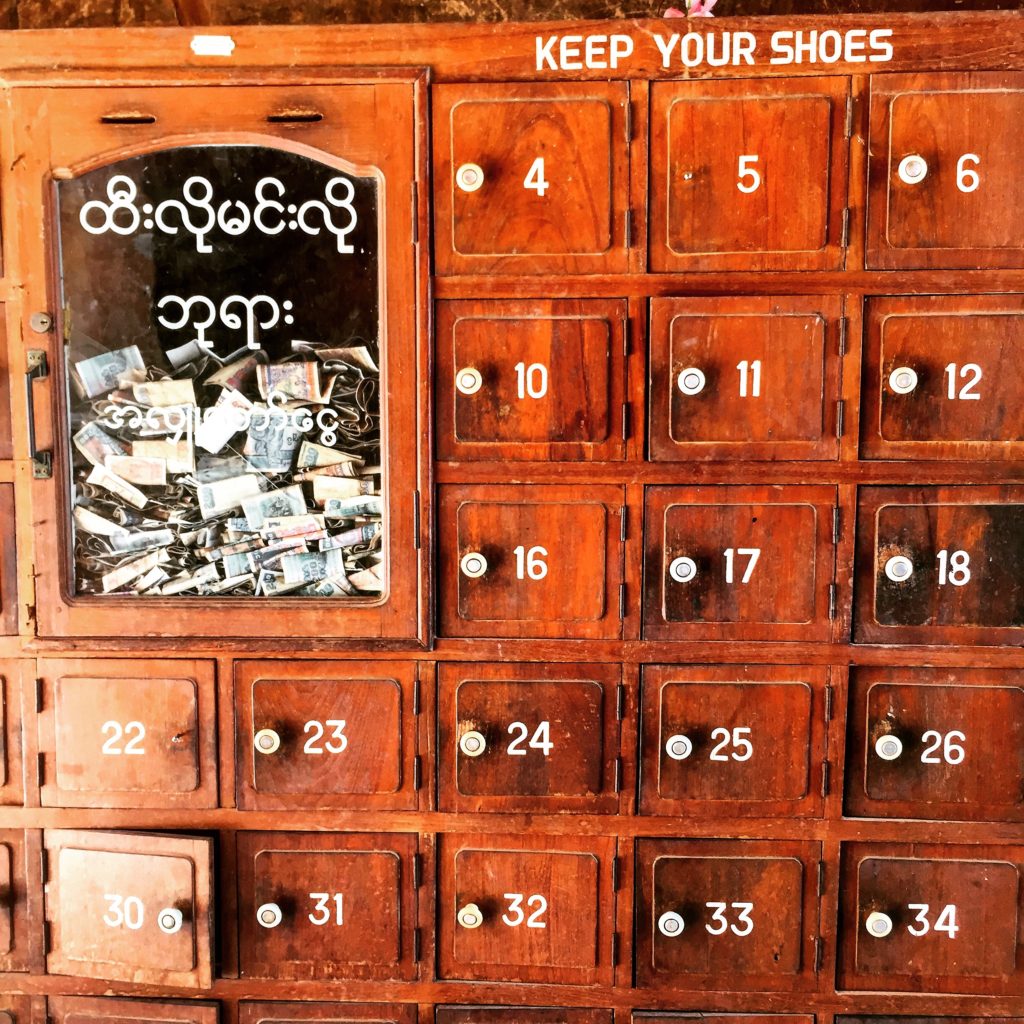
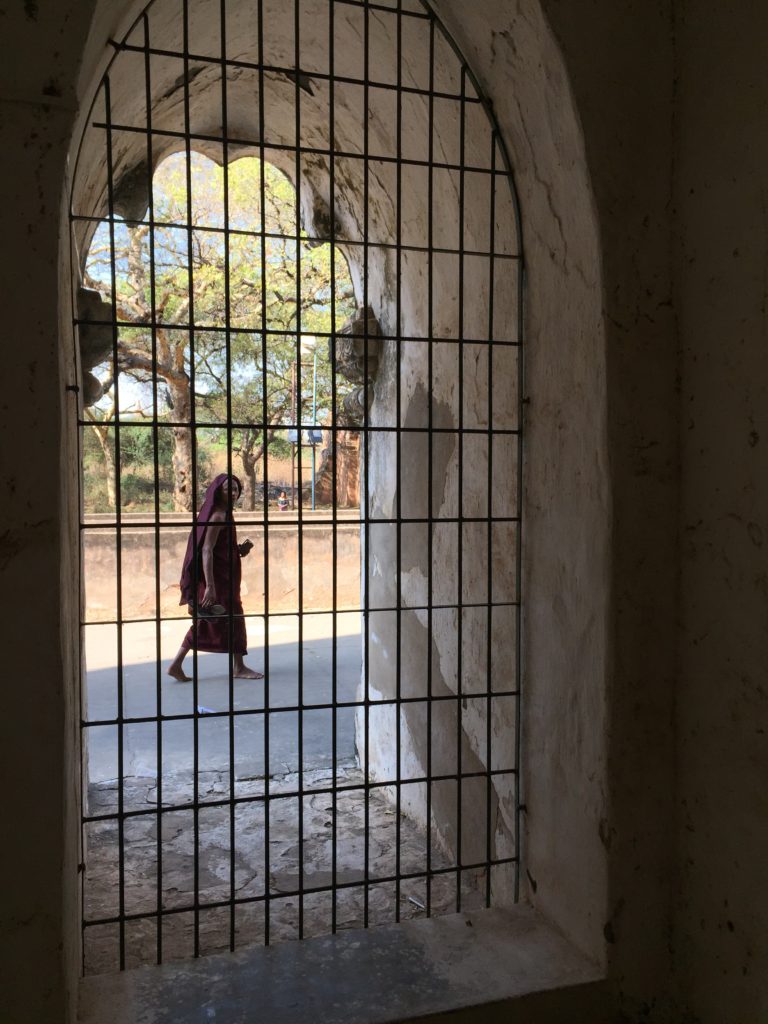
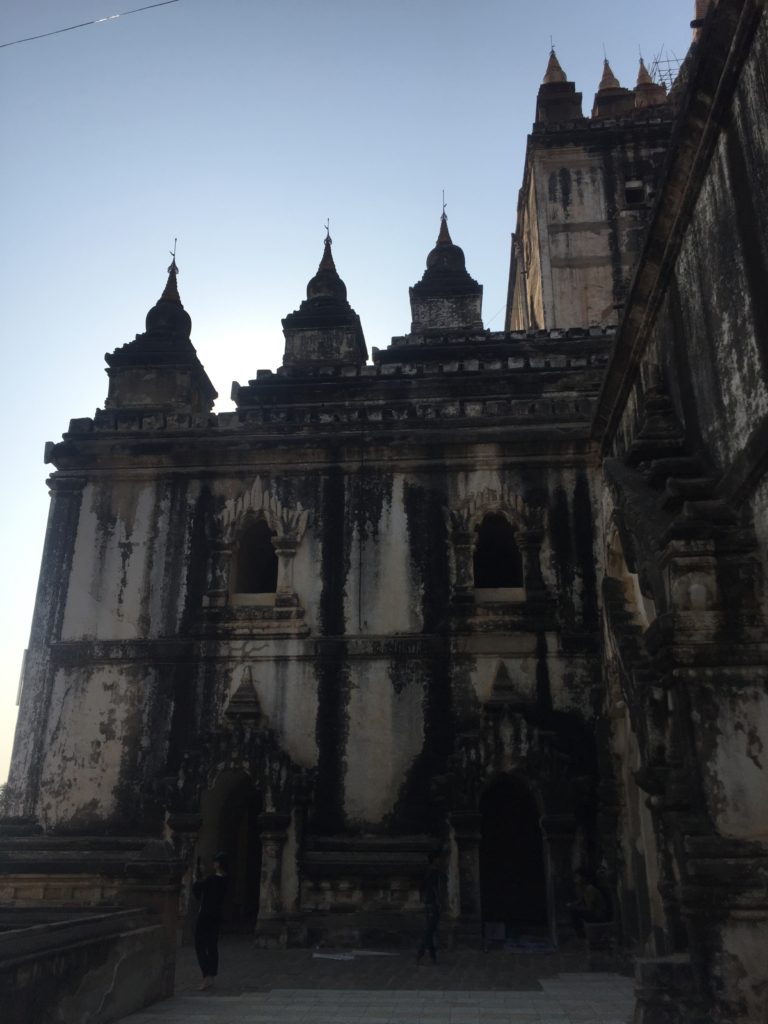
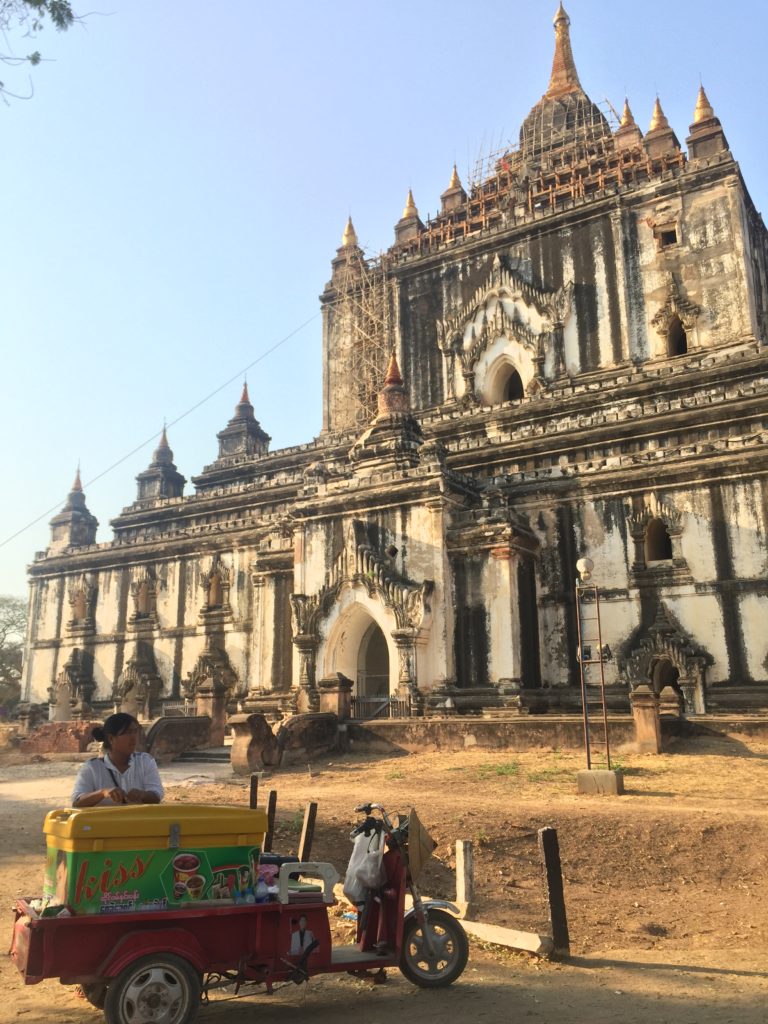
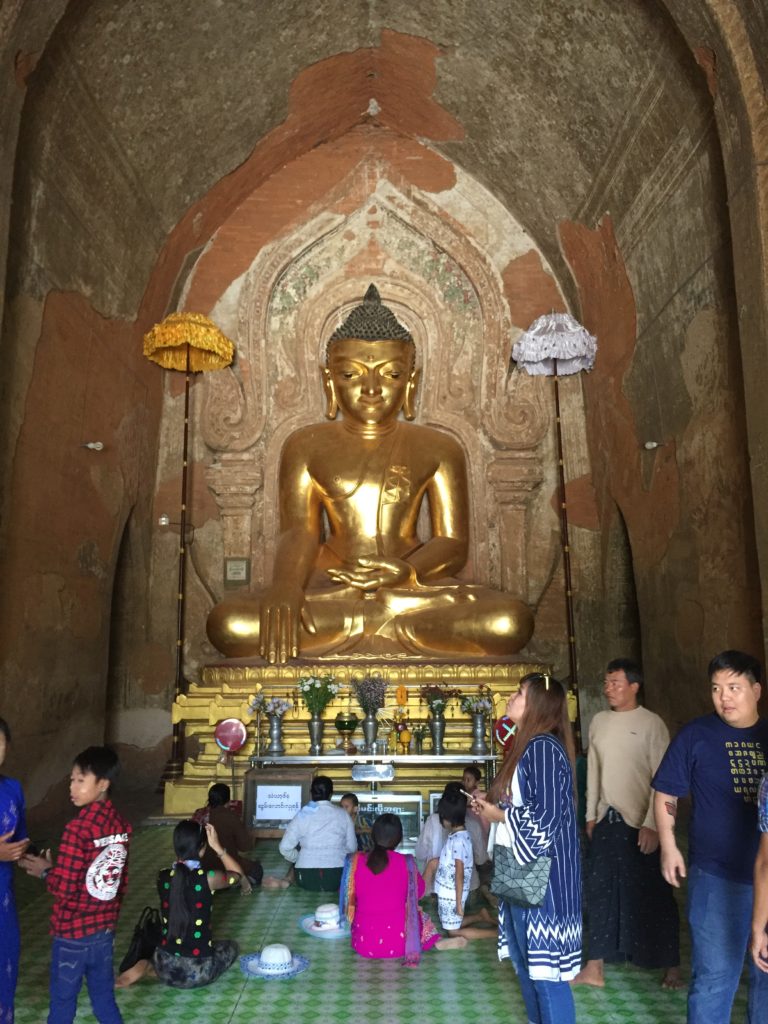
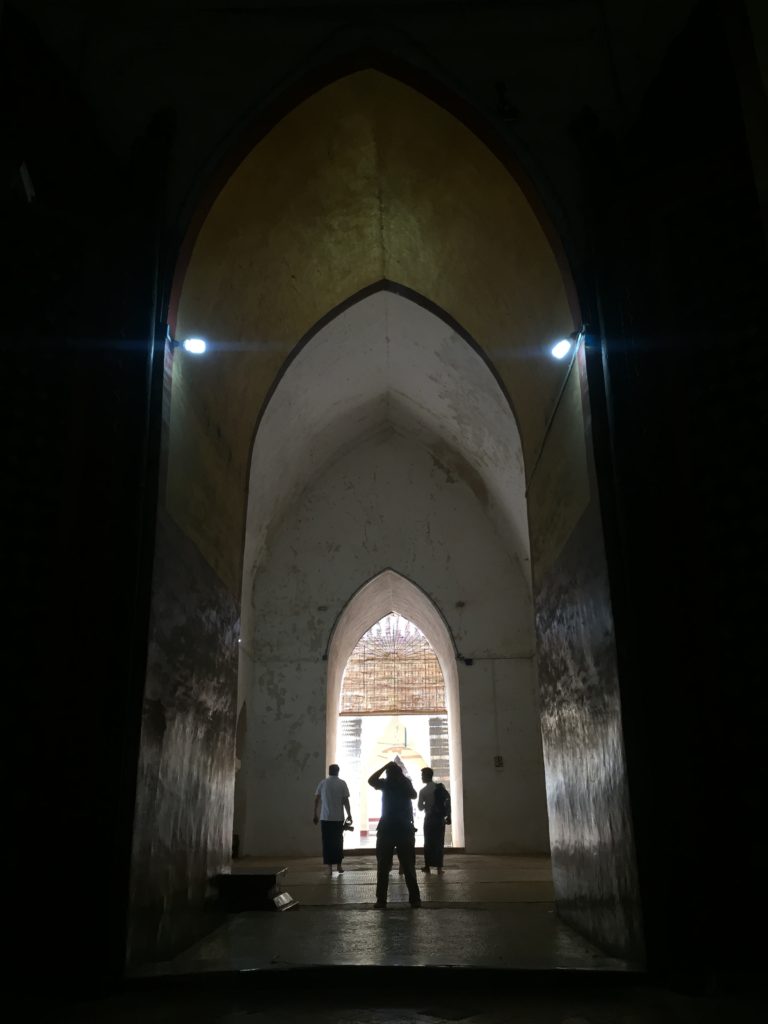
What is a Bagan E-bike?
Don’t confuse the term “e-bike” with your everyday electric bicycles increasingly found in large American and European cities. A Bagan e-bike is an electric bike powered by rechargeable batteries.
As you can see from the photos, some bikes are smaller, more like mopeds, while others are distinctly larger, cut from the same cloth as sport bikes. All versions are outfitted with standard motorbike features — horn, headlights, hand brakes, storage compartment and kickstand. License not required.
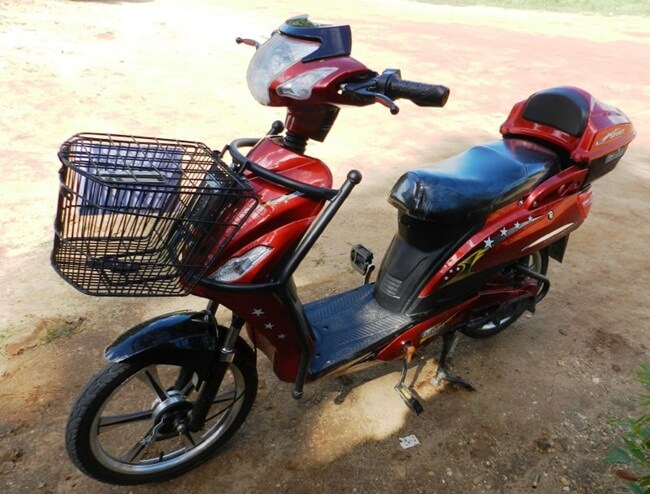
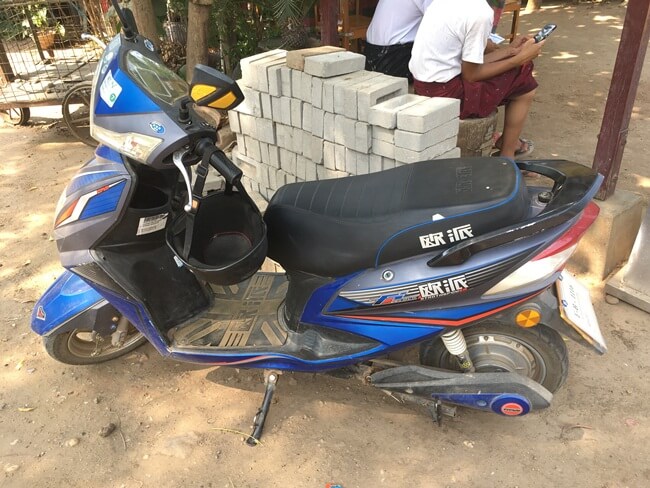
How to rent an E-bike in Bagan
My guesthouse rented e-bikes from the front doorstep, but they’re on offer everywhere. Standards of upkeep will vary, of course. Check it out before agreeing. Take it for a spin around the block. Ensure the lights and horn function properly. Inspect the tires. Inquire about assistance should the bike’s battery die in the middle of the scrubby desert far from town. Do not assume bike rental includes a helmet.
| E-bike type | Top Speed | Daily Cost | Battery Life | Risk |
|---|---|---|---|---|
| Standard - smaller, most common | 15-20 mph or 19-32 kpm | US $5-$10 or 6,500-13,000 kyat | Most likely a full day | Minimal, but not quite non-existent |
| Bigger - larger, more rare | Unknown. I maxed out around 38 mph (61 kph). It was definitely up for higher speeds. | US $7-15 or 9,000-19,500 kyat | All day, no problem, probably longer | A bit of excitement, but be careful! |
E-bike safety
I would never operate a full-size e-bike or motorbike without a helmet, but plenty of travelers do. Fewer than half of riders wore head protection. Imagine the consequences of an accident while traveling at a reasonable speed. Think about it and remember where you are — a Burmese hospital is not a destination you want on your agenda.
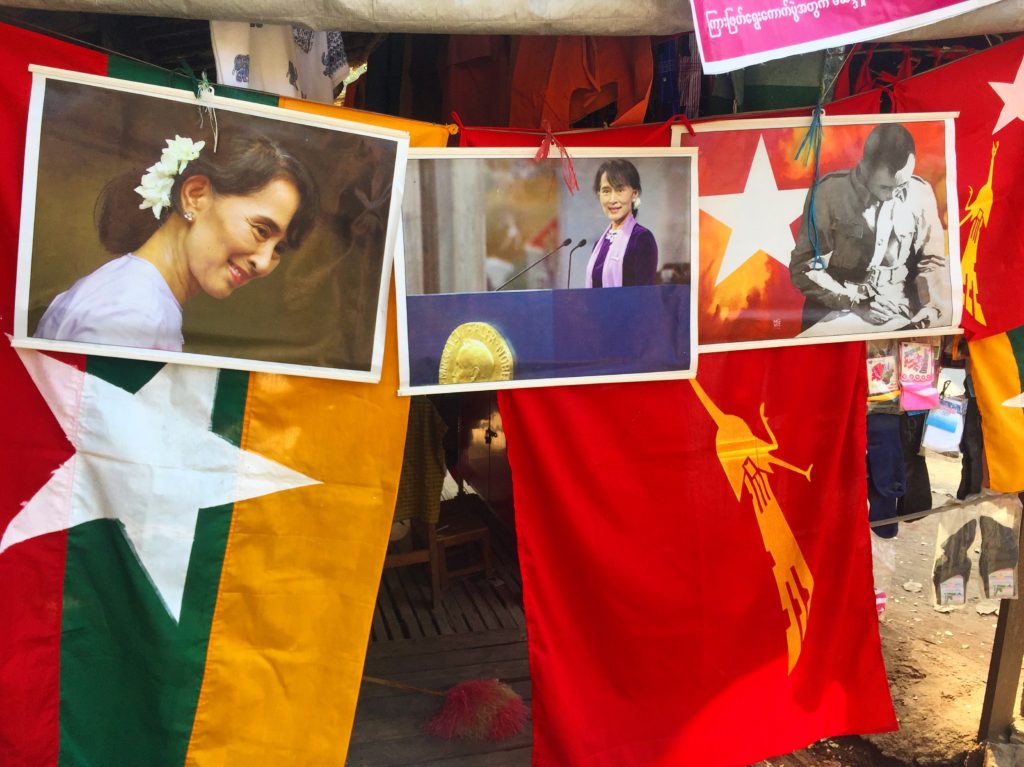
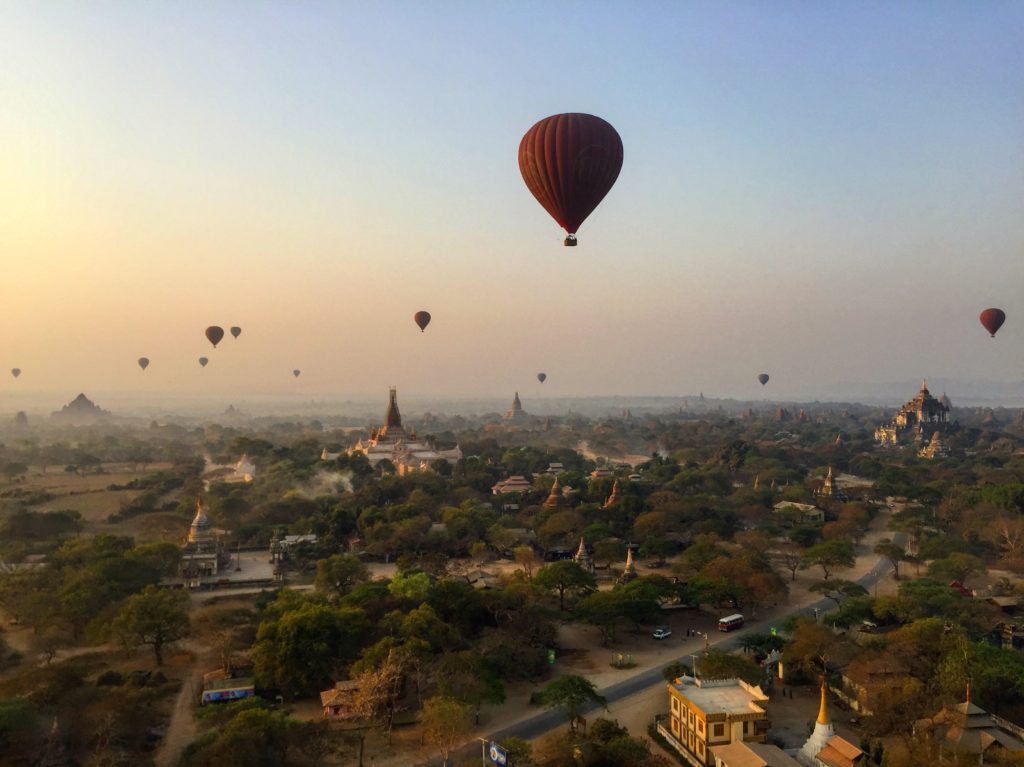
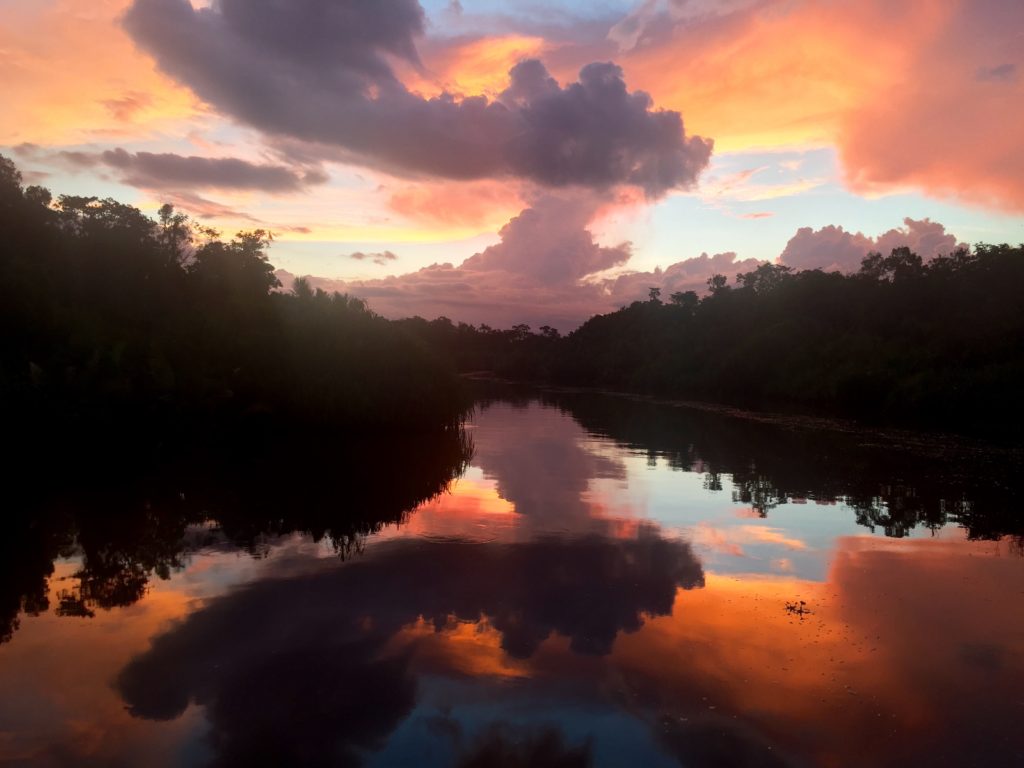
Hi Chris,
Man, what can I say, the narration was ON POINT! Thank you for the information, I felt that I was part of the tour already! I am thrilled and can’t wait to visit the beautiful Bagan!
Regards,
Flong
Hey Flong
Thanks so much for the kind words. Indeed, Bagan is fantastic! I hope you have a wonderful trip. All my best!
Thanks so much for sharing, I really appreciated it, since I will be there for one or 2 days only, what temple would u recommend me for sunrise and sunset? I will get a motorbike or e bike , I hate crowds/.
Please advise among all temples u visited , which one was your fav one for sunrise and sunset? thanks a lot again
Hey Sebastian
As of 2018, authorities have banned climbing Bagan’s temples, so your options will be much different than mine were when I visited last year.
One option is the viewing tower. I would advise against this as it’s pretty ridiculous. It doesn’t fit in with the construction of the temples, it sticks out, it will be busy.
Another choice are the dirt hills which have been ‘constructed’. They seem to be newly built in coordination with the climbing ban. Recent visitors don’t seem too thrilled.
The temples still look beautiful in the early morning light, so you could make an experience of e-biking out to a temple like Bulethi in the dark, hanging around on the ground and watching the sky brighten up as the structure changes colors. You may get to see the balloons float overhead too, though it depends on the winds.
If you have some cash to spare, the hot air balloons offer top-notch sunrise views. But they are expensive. And you’ll have to share sunrise with 8 or 10 other people. Better than a dirt mound with a bunch of selfie-sticks, in my mind, but you’ll have to make that cost/benefit decision for yourself.
Sunset boat trips along the Irrawaddy are a popular past time too, but I have a feeling they will probably become more busy as the actual climbing of temples is banned. Maybe you could get a local boat captain for yourself and head out on your own without a group?
Do keep in mind Myanmar has a history of implementing, changing and adjusting tourist policies with little or no notice or publication. A few years back a similar climbing ban was introduced at Bagan, only for it to be adjusted a few days later. At that point a handful of specific temples were open for sunrise and sunset viewing. Things could change, but I wouldn’t bank on it.
Do an internet search every once in a while or check in with the TripAdvisor Myanmar message board for some up-to-date info.
This is probably in the best interest of the actual temples, but I’m sure it’s not what you want to hear! Sorry for the bad news.
thanks, bummer about the ban, but it makes sense though.
I will try to do the hot air balloon for sure
Still would like to see the panoramic view and sunset from a hilly point.
1) quick question, I was told the motorbikes are charged by batteries? how did I know if whatever motorbike I rent out will be charged enough for the whole day?
Thanks again
Sebastian
There is a gauge in the front dash of the bike indicating battery life. Mine was color-coded from red up to green. With the key inserted you could tell how much battery remained.
As I mentioned in the write-up, there are two distinct types of e-bikes. The larger, more powerful version–Taiyuan, Chinese brand–will have plenty of battery. These will also be less common. The standard e-bikes will require a closer eye on your behalf.
Check the battery life before you go riding off. Treat it like a rental car–familiarize yourself with everything before starting off; horn, mirrors, battery, brakes, etc. I never set off unless my battery read absolutely full.
My guesthouse gave me a rough idea of how far and how long I could use the bike without worries. I trust most spots will do the same. Use your head, of course. Don’t wind up 15km from your base at 5pm with a dying battery, you know?
Make sure you have a contact number if things go wrong. I heard a couple stories of dead batteries where the rental spot sent a young guy out to swap batteries on-site.
Have fun!
hey buddy,I live in NY state.
Thanks for the info, lets see what happens with my myanmar trip, how things will turn out with all the traveling I have to deal within the country LOL
NY, eh? I won’t hold it against you…
You’re welcome for the tips, questions. Feel free if anything else comes up. And I’d love to hear about your trip once you return.
Keep an eye out around here in the meantime. Some more Myanmar posts coming whenever I get around to them.
hey buddy, thanks, cant wait. one more month and days I will be there.
1) QUICK question about sim card and withdrawal ATM money? did u bring cash with you and exchanged money at bank to avoid ATM high fees?
2) did u buy a sim card to get access to internet ?
Hey dude
1) I have an American bank card which reimburses ATM fees worldwide–Charles Schwab Investor Checking account, no fees, no minimums; in case you’re interested. Because of that I use ATMs as often as I like. So that’s what I did in Myanmar. There are ATMs pretty much everywhere, though be prepared for an occasional outage. And I always have $US backup just in case. A couple hundred. Make sure they’re new and in good condition. Myanmar is known for being particular and accepting only high quality bills.
2) I did. I bought a SIM with Ooredoo. It was just alright. Next trip I’ll try one of the other big three–Telenor or MPT. I would buy a SIM. The Wifi standard is fairly unreliable across the country.
Hope you have a great trip! Pop back here afterward and let me know how it goes. I’d love to hear your impressions.
Thanks buddy again
How easy or what are the requirements to open an account or get the debit card from charles schwab?
You’re welcome.
I did forget one point. They make you open a brokerage account too. Mine is empty. Never even used it. But it has to be linked to the ATM rebate account we’re talking about. Simple enough. Pretty good app. Great customer support.
In theory I suppose anyone could just use it for travel and ATMs at home, but it’s my main bank account too for bill pay, etc.
This is the account
Pingback: A BUDDHIST WATER BLESSING | No Guidebooks